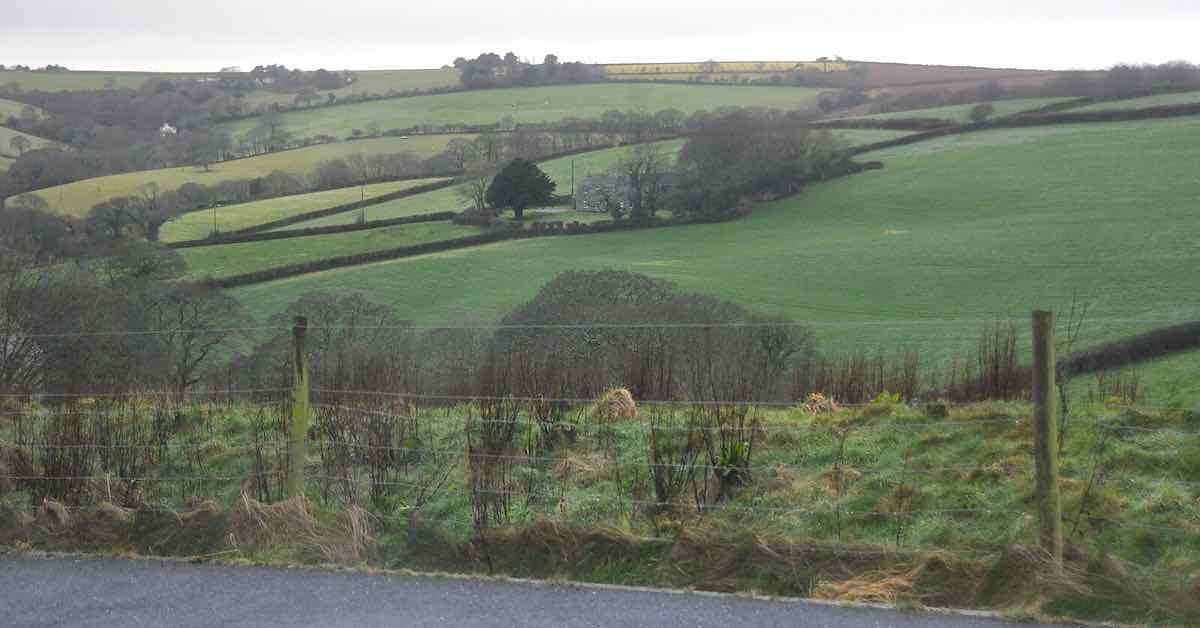UKPF sponsors and partners have given a guarded welcome to Labour’s plans to allow development on some Green Belt land.
Leader Sir Kier Starmer spoke of his plans last week and members of our editorial board, were generally in support, albeit cautiously.
David Jones, managing director of Evans Jones, said: “Sir Keir Starmer’s proposal to grant English councils additional powers to develop housing on Green Belt land represents a proactive approach to tackling the pressing housing crisis.
“The shortage of homes generally and the acute shortage of affordable homes has emerged as a significant challenge.
“By empowering local councils to make informed decisions regarding land usage based on their specific requirements, a more localised and responsive approach to housing development could be achieved.
“The challenge, however, will remain that local communities continue to be resistant to most new development, thus any Green Belt review must be coupled with a new commitment to enforceable housing delivery targets.
“The unlocking of Green Belt land, coupled with appropriate safeguards, offers an opportunity to establish sustainable communities and address the housing supply shortage.
“This measure aligns with the objective of enhancing housing accessibility for individuals and families, providing them with opportunities for secure and affordable accommodation.
“Additionally, it has the potential to stimulate economic growth by generating employment prospects within the construction industry and driving investment in local infrastructure.
“Nonetheless, it is essential to strike a careful balance between housing needs and environmental protection. The implementation of robust planning regulations is imperative to safeguard essential green spaces and protect natural eco-systems.
“With diligent execution, this policy could make a positive contribution to the country’s housing landscape while ensuring the responsible and sustainable utilisation of land resources.”
Sam Hollingworth, associate director in the planning team at Savills Chelmsford, said: “Any move to loosen Green Belt protection would be a significant departure from the approach taken by successive governments.
“The Green Belt holds a powerful position in the public consciousness, often associated with the protection of valued landscapes and wildlife habitats. However, in reality, other policies and designations perform this important role.
“Sir Kier offered an example of where application of Green Belt policy resulted in a playing field in Maidstone (outside of the Green Belt) being developed ahead of a car park (within the Green Belt).
“Such seemingly perverse outcomes have led some to question whether Green Belt policy actually results in more sustainable patterns of development.
“Additionally, our research has shown that many areas constrained by Green Belt are those with the highest levels of housing need, but with poorest records of delivery – supporting the case that policy designation is a significant barrier to addressing housing requirements.
“An obvious question for any government is whether the Green Belt in its current form is really helping to address the challenges we face today.
“We can perhaps expect further policy announcements before (and after) the General Election, but as recent history shows, these are not easy or quick matters to resolve.”
Jonathan Headland, urban design director for West Waddy Archadia (WWA Studios), said: “With the level of uncertainty created by DLUHC through three-plus years of consultation around planning reform, you’d be forgiven for forgetting that targeted Green Belt release is already possible through Local Plan preparation under the current NPPF.
“Debate around the Green Belt is only now possible in the context of ‘recent’ Tory prevarication in relation to planning reform, and a hardening of anti-development sentiment with the back benches of the party.
“Undoubtedly, carefully considered Green Belt release will continue to be required as part of a blended solution to providing meaningful housing provision where it is required across the country.
“I think the comments from Labour on the detail of their vision for housing is encouraging and hopefully emblematic of a Government which would seek to restore some much-needed certainty to our sector.
“We must move away from this binary framing of the Green Belt as either being sacrosanct or concreted over if we are ever to deliver the housing and infrastructure provision our country so desperately needs.”
John Dingle, partner in commercial property for Blandy & Blandy, said: “In what appears to be a potential boost for the housebuilding sector, Sir Keir Starmer seems to have put the Labour Party on a collision course with rural communities by announcing plans to give councils more powers to build housing on Green Belt land.
“Proposed measures would allow development where ‘it does not affect the beauty of our countryside’, the detail of which would obviously need to be further fleshed out.
“It is arguable that more can be done to unlock potential development sites and indeed the Conservative Government has recently branded the UK housing model as ‘broken’, but Green Belt development is clearly a sensitive topic.
“CPRE, the countryside charity, has stated that whilst small developments of affordable homes are needed by rural communities, brownfield sites should be prioritised as opposed to ‘a building bonanza of executive homes most people can’t afford’.
“Based on these new plans from the Labour Party, and in the context of a General Election in the not-too-distant future, will developers now start looking at potential sites with a fresh pair of eyes?”
Jade Uko, South East senior account director for DevComms, said: “’Back the builders not the blockers’ said Sir Keir Starmer this week.
“Election 2024 battlegrounds are being drawn and housing is fast becoming a dividing line.
- Housing targets will come back under Labour but expected to be relaxed under the Tories.
- The Tories want to protect GreenBelt from further development whilst Labour plan to increase powers to build.
- More power to local authorities and residents over development are being promised by both main parties.
Even within parties, there are differing views and a variety of pressures. Sir Keir Starmer has picked a side. Will we see a response from Rishi Sunak?”
Laura Fitzgerald, director of transport planning consultancy Motion, said: “Sensible conversations on the release of Green Belt land are welcome from an access and placemaking perspective; they offer the opportunity for step changes in travel behaviour from the outset because they typically offer a scale at which masterplanning can make an influential difference to future residents.
“There are many sites across the Berkshire area that are prime examples of this.”
James Miller, regional residential sector lead for RLB, said: “So ‘Labour would build on the Green Belt’ is the headline we all saw last week.
“When looking into the debate, is it more about bringing back housing targets? Scrapping housing targets will impact the current housing supply and is anticipated to take some recovery time if re-instated due to the time involved in the planning process.
“But back to the Green Belt; rural housing has many challenges, including affordability for all. Some sensitive management of planning within the Green Belt would be welcome. However, we need the detail which is critical to getting the right balance to deliver sustainable communities for all.”
Michael Knott, planning director for Stantec, said: “Starmer’s latest statement relating to housing and Green Belt feels significant, perhaps due to Michael Gove heading in the opposite direction, having consulted on changes which would prevent, or at least obfuscate, the ability for local authorities to release Green Belt land for housing.
“The statement could mean little more than the Labour Party does not support the Government’s proposed changes to planning policy (as published for consultation in December 2022), and potentially that current Green Belt policy would continue unamended.
“But the statement could serve to encourage Green Belt areas to accelerate the preparation of plans, given the prospect of a Labour (or Labour-led coalition) Government being elected by January 2025, introducing stronger support to deliver more housing.”
Image: Truro : Grassy Countryside by Lewis Clarke, CC BY-SA 2.0 <https://creativecommons.org/licenses/by-sa/2.0>, via Wikimedia Commons
© Thames Tap (powered by ukpropertyforums.com).
Sign up to receive our weekly free journal, The Forum here.















